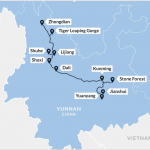St+Art has completely transfigured the look of Delhi ‘s street. A good 2 hours walk between Khanna market & Meherchand market in Lodhi Colony will leave you astounded as they illustrate their ideas into big art on the big walls. The Lodhi Colony of Delhi is now India’s very first open public art district.
If you need a guided walk, contact Aashish at +91-874-382-0466. Aashish is a student from Delhi University pursuing his Masters in English.
Art information courtesy to Start India






















Need help? Write to us at robin@serenejourneys.co or steve@serenejourneys.co (For UK & Ireland)
Visit our website at Serene Journeys
Robindro Saikhom (Robin)
Founder, Serene Journeys
Robin is the owner of Serene Journeys, a bespoke travel specialist for LGBT & communities based in New Delhi and a freelance travel photographer. Follow him on Instagram @serenejourneys or Facebook @Serene Journeys.




